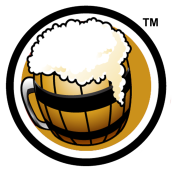Hops
|
Amount
|
Variety
|
Cost
|
Type
|
AA
|
Use
|
Time
|
IBU
|
Bill %
|
|
1.50 oz |
Magnum1.5 oz Magnum Hops |
|
Pellet |
12 |
Boil
|
60 min |
42.5 |
42.9% |
|
1 oz |
Lemondrop1 oz Lemondrop Hops |
|
Pellet |
6 |
Boil
|
10 min |
5.14 |
28.6% |
|
1 oz |
Lemondrop1 oz Lemondrop Hops |
|
Pellet |
6 |
Whirlpool at 180 °F
|
20 min |
3 |
28.6% |
|
3.50 oz
/ $ 0.00
|
Hops Summary
|
Amount
|
Variety
|
Cost
|
IBU
|
Bill %
|
|
1.50 oz |
Magnum (Pellet) 1.4999999965689 oz Magnum (Pellet) Hops |
|
42.5 |
42.9% |
|
2 oz |
Lemondrop (Pellet) 1.9999999954251 oz Lemondrop (Pellet) Hops |
|
8.14 |
57.2% |
|
3.50 oz
/ $ 0.00
|
Mash Guidelines
|
Amount
|
Description
|
Type
|
Start Temp
|
Target Temp
|
Time
|
|
8 gal |
Mash In |
Infusion |
-- |
156 °F |
40 min |
|
3.14 gal |
Sparge |
Fly Sparge |
-- |
168 °F |
60 min |
Starting Mash Thickness:
1.5 qt/lb
|
Target Water Profile
Light colored and malty
| Ca+2 |
Mg+2 |
Na+ |
Cl- |
SO4-2 |
HCO3- |
|
60 |
5 |
10 |
95 |
55 |
0 |
|
We will be adding 17 mL of 88% v/v lactic acid to the strike water which should bring the Mash pH down from 5.74 to our target of 5.20. |
|
Mash Chemistry and Brewing Water Calculator
|
Notes
BJCP guidelines suggest at least 50% wheat in the grist, so we decided to shoot the moon and go for a big wheat taste with a mostly wheat grist (70%). We also thought we’d compliment that with one of our favorite base malts, Golden Promise, rounding out the majority of the grist. Flaked wheat should add a sharper, more prominent wheat flavor to the brew than malted wheat, and the high diastatic power of both of the base malts are more than enough to handle the flaked wheat conversion. While the flaked will add some haze to the final product, the style guidelines on appearance don’t explicitly say that this brew has to be absolutely bright. The use of roasted barley was a last-minute addition, as we finally came up with a fun, catchy name for the brew: “House Red.” This was initially in response to the use of red wheat (and soft red flaked wheat) in our grist, but we then had the idea to color the beer to a deep red in order to mimic a red wine. We have had experience using roasted barley as a coloring agent in a red ale, so we added enough to get the color estimator on BeerSmith to hit red (0.1 lb @ 1692 SRM) — our copy of BeerSmith has a list of malts that have been verified with the manufacturer’s correct Lovibond rating, and have been converted properly to SRM. However, Brewer’s Friend’s darkest roasted barley is only rated 778 SRM, so to achieve the deep red color we’re looking for, we’d have to go with 0.4 lb of roasted barley. Because we’re using it for color and are trying to avoid adding a strong roast quality, in practice we’d start with 0.1 lb, and keep adding a little more until we’ve achieved the color we’re looking for, likely stopping at 0.2 lb. Also, the additional haze imparted by the flaked wheat should lend some moderate translucence that will contribute to the “wine-like” appearance we’re going for.
We will be doing a short mash at 156° F, in order to achieve a full body. The flaked wheat should also lend to a chewy, luscious texture. Both of these should keep us within the guidelines for mouthfeel. We will be adding 17 mL of 88% v/v lactic acid to the strike water which should bring the Mash pH down from 5.74 to our target of 5.20. We’re also using the “light colored and malty water profile,” which should hopefully help get us the results we’re aiming for. We’re planning a thin mash and slow lauter
that should help us with this high gravity recipe.
Our hops schedule is aimed at hitting a moderate bitterness (about 46-50 IBU), right in the middle of the scale for this style. The magnum hops are there for basic bitterness, and the lemondrop will lend a distinct character to this brew. While there is no specification for what kind of hops are to be used, many of the commercial examples tend to lean toward the herbaceous variety, or a Noble or noble-like hop. Many (both commercial and homebrew) use Cascade. We decided to go with a lemondrop, which was bred to be a “super Cascade” and has a decent amount of farnesene, which should lend woody, herbal, and citrus, and even floral aromas. We also decided on these hops because we felt this distinctly American craft style should have some American style hops. And finally we decided to keep the yeast character to a minimum with good ol’ US-05, so that our malt and hop aspects (mainly malt) are dominant.

Last Updated and Sharing

- Public: Yup, Shared
- Last Updated: 2019-02-03 20:39 UTC
For quick copying and pasting to a text based forum or email.
Click the Download as HTML file button below.
Recipe costs can be adjusted by changing the batch size. They won't be saved but will give you an idea of costs if your final yield was different.
|
Cost $ |
Cost % |
| Fermentables |
$ |
|
Steeping Grains
(Extract Only) |
$ |
|
| Hops |
$ |
|
| Yeast |
$ |
|
| Other |
$ |
|
| Cost Per Barrel |
$ 0.00 |
|
| Cost Per Pint |
$ 0.00 |
|
| Total Cost |
$ 0.00 |
|
Other Brewers Who Brewed This Recipe:
Discussion about this recipe:
